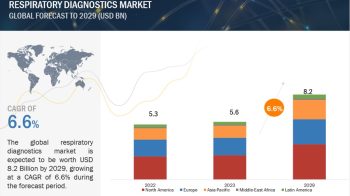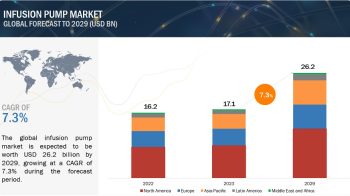Intraoperative Imaging Market Dynamics
Driver: Technological advancements in intraoperative imaging modalities
Over the past decade, the medical device sector has witnessed significant transformations and technological advancements in intraoperative imaging, including the emergence of focused imaging technologies and portable/handheld/smartphone-based intraoperative imaging devices. Technologically advanced intraoperative imaging systems offer faster results, higher image quality, easier operations, and simplified consoles as compared to traditional imaging devices.
The key players in the intraoperative imaging market are increasingly focusing on launching novel technologically advanced products. Innovation in this market focuses on developing economical, technologically advanced, and easy-to-use intraoperative imaging systems.
An important technological advancement is a reduction in the noise/sound produced by intraoperative imaging systems. Key players have continually produced devices that produce far less sound. Such advancements focus on improving the functionality of intraoperative imaging systems and on expanding their application areas, thereby driving the demand for these systems among end users.
Request Sample Pages@
https://www.marketsandmarkets.com/pdfdownloadNew.asp?id=94836651
Restraint: High cost of intraoperative imaging systems
Intraoperative imaging systems are priced at a premium and require high investments for installations, increasing the procedural cost for patients. This affects the adoption rate of new systems, especially in emerging countries; most healthcare facilities in these countries, consequently, cannot afford such systems.
Healthcare facilities that purchase such costly systems often depend on third-party payers (such as Medicare, Medicaid, or private health insurance plans) to reimburse costs incurred in screening and therapeutic procedures performed using these systems. As a result, factors such as continuous cuts in reimbursements for intraoperative imaging scans and the increasing cost of intraoperative imaging systems prevent medium-sized and small healthcare facilities from investing in advanced intraoperative imaging modalities.
Expected Revenue Growth:
The global intraoperative imaging market size is estimated to be USD 1.9 billion in 2020 and projected to reach USD 2.5 billion by 2025, at a CAGR of 5.2 %.
Recent Developments:
# In 2019, Canon Medical (Japan) launched Global Illumination next-generation rendering capabilities to allow clinicians to visualize and manipulate photo-realistic anatomical images.
# In 2019, Seimens AG (Germany) established a new R&D center in Bengaluru, India, which offers diagnostic imaging solutions and advanced therapies. The center will manufacture mobile C-arm devices locally in India.
# In 2019, IMRIS, Deerfield Imaging announced a collaboration with the Prince Sultan Military Medical City and distributor Gulf Medical Company to install the first IMRIS Surgical Theatre in Saudi Arabia.
# In 2018, Koninklijke Philips N.V. (Netherlands) established an AI lab in Shanghai, China. The AI lab is dedicated to driving the integration of AI technologies in medical imaging, image-guided therapies, patient monitoring, health informatics, home care, and personal health applications.
Asia Pacific likely to emerge as the fastest growing intraoperative imaging market, globally
Geographically, the emerging Asian countries, such as China, India, South Korea, Taiwan, and Singapore, are offering high-growth opportunities for market players. The Asia Pacific intraoperative imaging market is projected to grow at the highest CAGR of 6.4% from 2020 to 2025. Government efforts to increase fundings; supportive regulations for the development and commercialization of advanced intraoperative imaging products; rising healthcare expenditure; the increasing number of hospitals in India and China; expanding research base across India, China, and Japan; and the increasing incidence of surgeries are driving the growth of the APAC intraoperative imaging market.
Request Sample Pages@
https://www.marketsandmarkets.com/requestsampleNew.asp?id=94836651
Global Key Players:
General Electric Company (US), Siemens Healthineers AG (Germany), Ziehm Imaging GmbH (Germany), Medtronic (Ireland), and Koninklijke Philips N.V. (Netherlands) were the top five players in the global intraoperative imaging market. Other notable companies are Canon Healthcare (Japan), Stryker (US), Brainlab AG (Germany), IMRIS (US), Shimadzu Corporation (Japan), Shenzhen Anke High-tech Co. (China), Hitachi, Ltd. (Japan), FUJIFILM Holdings (Japan), Carl Zeiss Meditec AG (Germany), Mindray Ltd. (US), Carestream Health (US), Analogic Corporation (US), Allengers Medical Systems Ltd. (India), Esaote SpA (Italy) and NeuroLogica Corporation (US).
Different Growth Strategies Adopted by Key Players:
The analysis of market developments between 2017 and 2020 revealed that several growth strategies such as research collaborations were adopted by market players to strengthen their product portfolios and maintain a competitive position in the human orgnaoids market.


